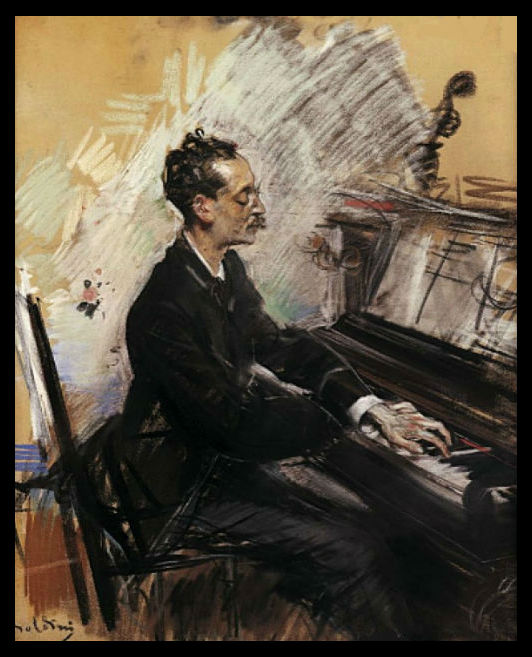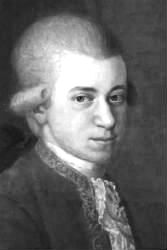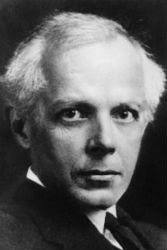POULENC
FRANCIS POULENC: INTERVIEW ON HIS PIANO WORKS
‘Francis Poulenc at the Piano: Advice and Favourites’ – Interview with Claude Rostand conducted in 1953-54
Posted by kind permission of Nicolas Southon and Roger Nichols
From Nicolas Southon (ed.) & Roger Nichols (tr.), Francis Poulenc: Articles and Interviews (Surrey: Ashgate Publishing, 2014) pp. 191-94
CR: You’re a composer, and we’ve spoken about the origins of that. But you’re also a pianist. These days you display a certain stylishness as a pianist – more than stylishness, maybe! Composers often play or conduct their own works badly or very badly: Ravel, Schmitt and so on. Prokofiev, Hindemith and Britten are the only exceptions to the rule.
You’re a composer for the piano. Your pianistic output is not, I know, the music of yours you like best. But you’re always at the piano, and probably always will be. You’ve written a lot for the instrument. And yet you don’t often play your piano works, apart from the concertos. So you have had a ‘piano problem’ right from the start, from the famous Mouvements perpétuels.
FP: Yes, my dear Claude, I do have a ‘piano problem’, but I’m sorry we should be coming to it already, before sorting out certain points of…
CR: … your general aesthetic?
FP: If you like… It does mean jumping rather rapidly from the anecdotal style of our previous interviews to the more technical approach demanded by your question, but after all there is perhaps a certain logic to this, since the piano is obviously at the heart of my musical vocation.

Paul Cézanne, Blue Jar, Fruit and Bottle of Wine, 1906

Paul Cézanne, Carafe with a Bottle of Cognac and Fruit, n.d.
At the age of five, it was my mother who placed my fingers on the keyboard, and then enlisted the help of an excellent lady who impressed me more by her strange straw hats and her plum-coloured, mouse-coloured dresses than by her easy-going teaching. At the age of eight, thank God, I was given daily lessons by an assistant to Mlle Boutet de Monvel, one of César Franck’s nieces, who was excellent on the technical front. Every evening, after school, I’d spend an hour of serious work under her tuition, and whenever I had five free minutes during the day, I’d rush off to the piano and do some sightreading.
I have to say I was quite a good at getting through the notes (‘getting through’ is the only phrase to describe my lack of technique at the time). That’s how I was able, in 1913 at the age of 14, to enjoy Debussy, Ravel and Stravinsky. At 15, as I wanted to study seriously, a friend of my family, Mme Sienkiewicz, introduced me to Ricardo Viñes, for whom I had a passionate admiration. At that time, in 1916, he was one of the rare professional pianists to play modern music, together with Marguerite Long, the incomparable interpreter of Fauré and Ravel, and Blanche Selva, the champion of d’Indy, Séverac and Albéniz. That meeting with Viñes was crucial for me. I owe him everything.
[Editor’s note: Poulenc was a pupil of the Spanish pianist Ricardo Viñes (1875–1943) between 1914 and 1917.]
CR: Which is why we always see a photo of Viñes on your piano. Would you like to tell us something about him?
FP: Dear Viñes! I could talk about him for hours, I loved him so much and was so proud of the affection he lavished on me. Just think, the first time I returned to Barcelona after the Second World War, I was asked to play the Mouvements perpétuels as an encore in his memory. As I announced them, I burst into tears.
Viñes was a delightful man; a strange hidalgo with large moustaches, wearing a brown sombrero in true Barcelona fashion, and delicate button boots with which he would kick my ankle when I made a clumsy pedal change. Pedalling is an essential ingredient of modern music, and nobody taught it better than Viñes. His technique allowed him to play clearly amid a welter of pedal, which seems like a paradox. And what control of staccato! The great pianist Marcelle Meyer, who was his most brilliant pupil, said to me one day after she’d played the Three Pieces from Petrushka: ‘Thanks to Viñes, that’s not as hard as you think.’
CR: Do you remember, by any chance, what you played at your first lesson?
FP: I think so. First, Schumann’s Faschingschwank aus Wien, which I’ve always adored (I adore Schumann), then some Debussy Preludes, including ‘Minstrels’.

Paul Cézanne, Ginger Jar and Fruit on a Table, n.d.

Paul Cézanne, Fruit, 1885
CR: Was it your studies with Viñes that inspired you to write piano music?
FP: Undoubtedly. At the time of my first lessons, I composed some preludes of unbelievable complexity, which would amaze you today. They were sub-Debussy, written on three or four staves. These preludes from 1916 have never been played. Auric was the only person to see them.
Then I dedicated to Viñes three pastorales in 1918. They remained unpublished for some time, but in 1928 Casella wrote to me: ‘What happened to your pastorales? I liked them a lot,’ so I had the idea of going back to them. They were published as Trois pièces pour piano. The first of them is almost identical with the original version; I kept the opening four bars and the conclusion of the second and turned it into a ‘Toccata’, well known now thanks to Horowitz; finally I replaced the last one with a ‘Hymne’, in the style of my Concert champêtre.
In fact, my first published piano work was the Mouvements perpétuels, premiered by Viñes in 1919 at one of the Lyre et Palette concerts.
CR: I’d like you to give me an overall view of the evolution of your piano music from the Mouvements perpétuels of 1918 to the Thème varié of 1952. You’ve told me so often that you have no high regard for your piano music, despite its success with professional pianists, that I’d like you now to give some explanation of this.
FP: No doubt you’ll find me paradoxical when I say that it’s because I’m too familiar with writing for the piano that I’ve failed with many of my pieces.
Facility, dodges, knowing the ropes—these often, I’m sorry to say, take the place of true musical interest. I think in all honesty that my piano music is neither as good as pianists claim, nor as bad as some of your fellow critics have said. The truth lies in between. What’s strange is that when the piano is accompanying singers, then I innovate. My piano writing is also quite different with orchestra or in chamber music. It’s only the solo piano that eludes me. There I’m the victim of pretence.

Paul Cézanne, Carafe and Bowl, 1880

Paul Cézanne, Almond Trees in Provence, n.d.
CR: Even so, you’ve created gradually, following your instinct, an individual style whose demands mean that when a pianist plays one of your Improvisations as if it were Bach, or some other piece like a Chopin Nocturne, you’re furious.
FP: Clearly, it’s with my piano music that I suffer the greatest disappointments on the interpretative front, deriving from the fact that I have a very precise conception of how the instrument should be deployed. The serious technical errors that disfigure my piano music, to the point of making it unrecognisable, are these: rubato, stingy pedalling, and over-articulation of certain repeated chordal or arpeggiated patterns which should, on the contrary, be played very blurred.
Let me explain: I hate rubato (as far as my own music’s concerned, that is). Once a tempo is set, it must on no account be changed until I indicate the fact. Never extend or shorten a note value. That drives me mad. I prefer all the wrong notes in the world.
As for the use of the pedals, it’s the great secret of my piano music (and often its real drama!). The pedal can never be used enough, do you hear! Never enough! Never enough! Sometimes when I hear certain pianists playing my music, I want to shout at them: ‘Put some butter in the sauce! What’s this diet you’re on!’ As I’ve said, Viñes had such a fine pedal technique that maybe he taught me to put too much confidence in the pedal. In fast music, I’ve sometimes relied on the pedal to produce, in a virtual sense, the harmony of a passage that it would be impossible to notate, exactly, at that tempo. In saying this I think especially of the last variation of my Thème varié. As for the repeated chords and arpeggios, they should for the most part be damped down to allow the tune to come out. Do you find it attractive if a pianist plays the beginning of my seventh Improvisation like this? (Poulenc makes fun of a well-known pianist.)
The German school of piano playing is, of course, the one furthest from my pianistic aesthetic, as it is from those of Debussy and Ravel (the wonderful Gieseking being excepted, naturally). The Russian school, on the other hand, suits me perfectly. Nobody plays me better than Horowitz and how well Rubinstein does! To be honest, I must add to the technical influence of Viñes that of Alfredo Casella. This marvellous musician played the piano in a way I found enchanting: with what precision his long hands moved over the keys, what an ideal staccato he had, and what ingenuity in dividing up passages between the two hands! Without him I would probably never have written the opening of my Concerto for two pianos the way I did.

Paul Cézanne, Blue Flowerpot, 1885

Paul Cézanne, Château de Medan, 1881
CR: To conclude, may one ask you which of your piano pieces find approval inyour eyes, and which are your bêtes noires?
FP: That’s very simple. I tolerate the Mouvements perpétuels, my old Suite in C and the Trois Pièces (originally pastorales). I’m very fond of my two volumes of Improvisations, an Intermezzo in A flat and certain Nocturnes. I condemn beyond redemption Napoli and the Soirées de Nazelles. As for the rest, they
don’t interest me.
CR: That makes a tidy ending.
FP: May I say one more thing?
CR: Of course!
FP: If pianists trusted my metronome markings, which have been calibrated very carefully, then many calamities would be avoided.
POULENC IN ‘MARA, MARIETTA’
FROM ‘MARA, MARIETTA’
Part One Chapter 3
How shall I relate that magical evening, Marietta? How shall I convey the glory of your concert? Why, by casting my gaze with the eye of the heart, by cocking my ear to the silence in the sound.
Look! You walk out from the wings with decided step, violin and bow in hand; the pianist, tall and equine, smiles as he mirrors your stride. What a handsome couple! The two of you stand in front of the acclaim, you ravishing in the red gown that hugs your body, he chic in his black jacket and open-neck shirt. A puffed-up handkerchief adorns his breast pocket; his abundant hair, a mop of dark curls, tumbles over the side of his head in a throwback to some other time. Who is this Matteo Balestieri? Look! Your hair tumbles off your shoulders as you bow into the applause. How is it, I wonder as you straighten up, your strapless gown doesn’t fall down?

Charles Dana Gibson, Violinist, n.d.

Giovanni Boldini, The Pianist A. Rey Colaco, n.d.
Now shall I speak of how effortlessly your fingertips found the pitches of anxiety and fervour, how confidently your bow found a voice for the unpredictable, in Poulenc’s Sonata for Piano and Violin? No, I’ll simply observe that at the end, facing the ovation, there was a look on your face that seemed to say, ‘I came here to play, not for your applause’.
Shall I speak of the art of indirection, subtle and discreet, in Matteo’s solo turn? Shall I convey the elegant intimacy of Poulenc’s Mélancolie? No, I’ll simply say that when you returned from the shadows, you were immediately into the music, making a melody of the bare bones of a tune that Matteo offered you.
FRANCIS POULENC: FOUR BOOKS

Hervé Lacombe, Francis Poulenc (in French)
VIDEO: FRANCIS POULENC – Sonata for Violin & Piano | Intermezzo in A-Flat Major | Mélancolie
Sonata for Violin & Piano | Marié Rossano, piano & Janice Carissa, violin
Intermezzo in A-flat major | Shun Oi, piano
Mélancolie | Hilary McLaughlin, piano
SPOTIFY: FRANCIS POULENC, Piano Works | Sonata for Violin & Piano

Eric Le Sage, Poulenc: Piano Works

Pascal Rogé, Poulenc: Piano Works

Régis Pasquier, Poulenc: 5 Sonatas with Piano


















